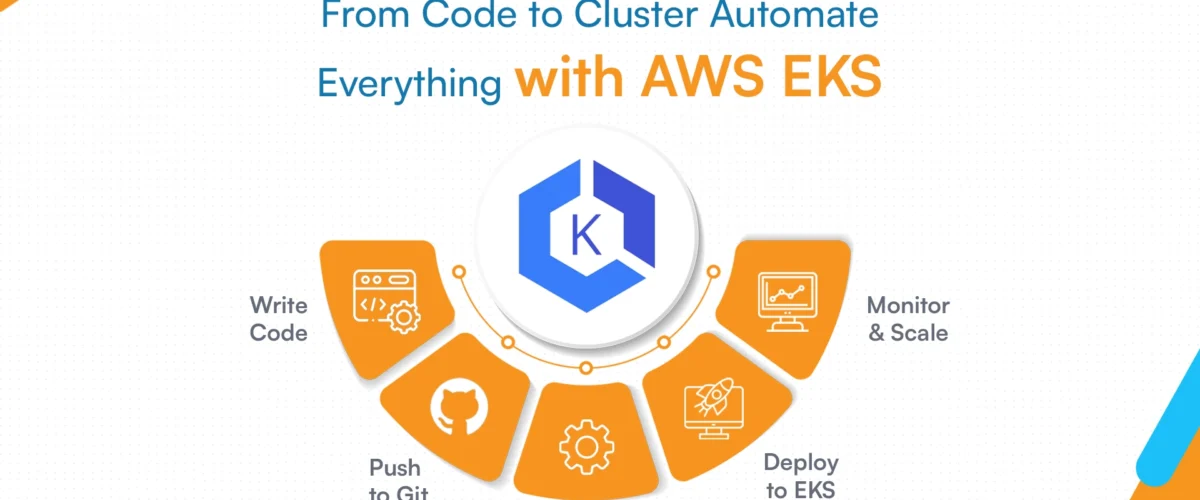
CI/CD (Continuous Integration and Continuous Deployment) is the foundation of a modern DevOps pipeline. For Kubernetes workloads, CI/CD automation is even more critical due to the complexity of container orchestration, Helm charts, YAML configurations, and environment consistency.
When using AWS Elastic Kubernetes Service (EKS), automating CI/CD helps teams:
- Eliminate manual deployment errors
- Speed up development cycles
- Improve security and traceability
- Scale delivery with confidence
In this blog, we’ll focus on how to implement robust CI/CD for Kubernetes using Jenkins – a widely adopted and powerful automation server—and we’ll also explore alternative tools like GitHub Actions, GitLab CI/CD, ArgoCD, and FluxCD.
Why Jenkins for Kubernetes CI/CD?
Jenkins is a veteran CI/CD tool with strong community support and plugin flexibility. While newer tools offer cloud-native experiences, Jenkins remains a top choice because:
- Highly customizable with plugins (Kubernetes, Git, Docker, Helm, etc.)
- Can be extended to fit any workflow
- Easy to integrate with EKS and AWS services
- Supports fine-grained security and access control
CI/CD Architecture Overview
CI Phase (Continuous Integration)
- Source code pushed to Git
- Jenkins builds Docker image
- Image scanned for vulnerabilities
- Image pushed to Amazon ECR
CD Phase (Continuous Deployment)
- Kubernetes manifests or Helm charts updated
- Jenkins triggers deployment using kubectl or Helm
- ArgoCD or FluxCD (optional) implements GitOps strategy
- Prometheus/Grafana monitor performance post-deployment
Step 1: Setting Up Jenkins for Kubernetes CI/CD
Required Plugins:
- Kubernetes plugin
- Git plugin
- Docker plugin
- Amazon ECR plugin
- Helm plugin
- Pipeline plugin
Install Jenkins on an EC2 instance or inside EKS:
Create IAM Role with Access to:
- ECR
- EKS (via eks:DescribeCluster, eks:UpdateClusterConfig, etc.)
- S3 (optional for artifacts)
Step 2: Automating the CI Pipeline with Jenkins
Here’s a basic Jenkins pipeline for building, scanning, and pushing Docker images to Amazon ECR:
Step 3: Automating the CD Pipeline with Jenkins
Security Best Practices for CI/CD on AWS EKS
- Use IAM roles for service accounts (IRSA)
- Store secrets in AWS Secrets Manager
- Scan images regularly with Trivy or Amazon Inspector
- Implement RBAC in Kubernetes
- Audit using AWS CloudTrail and Kubernetes audit logs
Monitoring & Rollback Strategy
- Use Prometheus and Grafana to monitor application health.
- Automate rollback with tools like Argo Rollouts.
- Test with canary or blue-green strategies before full rollout.
Conclusion: Automate Early, Deploy Often
Automating CI/CD for AWS EKS using Jenkins enables teams to deliver faster, with better consistency and control.
- Jenkins gives you complete flexibility for complex pipelines.
- Combine it with GitOps tools like ArgoCD for declarative, scalable deployments.
CloudLaunchpad helps you bootstrap secure, production-grade CI/CD pipelines quickly.


